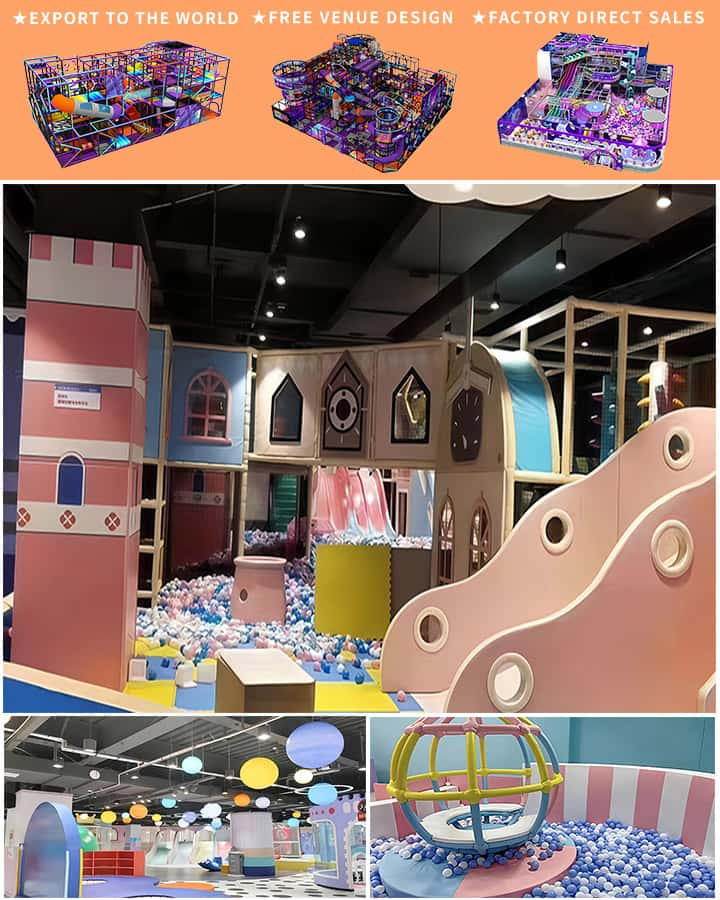Outdoor playgrounds are a treasure trove of excitement and exploration, essential for the holistic development of preschoolers. The right playground equipment not only ensures hours of fun but also plays a crucial role in enhancing their physical health, social skills, and cognitive abilities. This guide will help parents, caregivers, and educators make informed decisions when choosing outdoor playground equipment for preschoolers.
Importance of Outdoor Playground Equipment
Outdoor play is indispensable for young children, offering numerous benefits that indoor activities may not provide. Exposure to fresh air and sunlight boosts immune function while physical activities promote overall fitness and coordination. Moreover, playgrounds are fantastic venues for fostering social interactions and teamwork as children learn to share and collaborate with peers.
Types of Outdoor Playground Equipment
Climbers and Jungle Gyms: Climbers and jungle gyms are excellent for developing motor skills and coordination. These structures come in various designs, from simple ladder-and-slide combinations to more elaborate multi-level climbing frames. They encourage children to use their imagination while navigating through different paths and obstacles.
Slides: Slides are timeless favorites among preschoolers, providing endless joy and a gentle introduction to the concept of gravity. Whether it’s a straight slide, a wavy slide, or even a spiral slide, these attractions enhance balance and spatial awareness.

Swings: Swings offer a soothing yet thrilling experience, promoting vestibular stimulation and core muscle strength. From traditional belt swings to modern bucket seats, swings come in various forms to cater to different age groups and preferences.
Sandbox: A sandbox offers a sensory-rich environment where children can dig, build, and create using tools like shovels and rakes. It encourages fine motor skills and imaginative play, often resulting in cooperative play sessions with friends.
Merry-Go-Rounds: Merry-go-rounds are perfect for fostering balance and coordination. Children love the gentle spinning motion and the challenge of staying on while the platform rotates. These rides can be both entertaining and physically beneficial, strengthening leg muscles and improving balance.
Musical Instruments: Incorporating elements like chimes, drums, and xylophones into the playground can turn playtime into a musical adventure. Musical instruments stimulate auditory senses, encourage creativity, and foster an appreciation for music from a young age.
Safety Considerations
When selecting outdoor playground equipment, safety should always be a top priority. Ensure that all equipment complies with relevant safety standards and certifications. Here are some key factors to consider:
- Material Quality: Choose durable, non-toxic materials that can withstand various weather conditions.
- Surface Material: The playground surface should be soft and shock-absorbent, such as rubber mats or wood chips, to cushion falls and reduce injury risk.
- Structural Integrity: Check for stable construction and secure fastenings to prevent tipping or collapse.
- Maintenance: Regularly inspect and maintain the equipment to ensure ongoing safety and functionality.
Age-Appropriate Choices
It’s important to select equipment suitable for the developmental stage of preschoolers, typically aged 2 to 5 years. Look for features that match their size, strength, and capabilities. For instance:
- Toddler Areas: These should have low-height climbers and small slides designed specifically for younger children who may still be learning to navigate playground structures independently.
- Preschool Areas: These can include slightly taller climbers, moderately challenging bridges, and larger swing sets to accommodate older preschoolers who are ready for more advanced play.
Conclusion
Creating an engaging and safe outdoor playground for preschoolers requires thoughtful consideration of their developmental needs and preferences. By choosing the right mix of climbing structures, slides, swings, and other interactive elements, you can provide a stimulating environment that encourages physical activity, creativity, and social interaction. Remember, the ultimate goal is to foster a love for play that will benefit your child’s growth and happiness for years to come.




